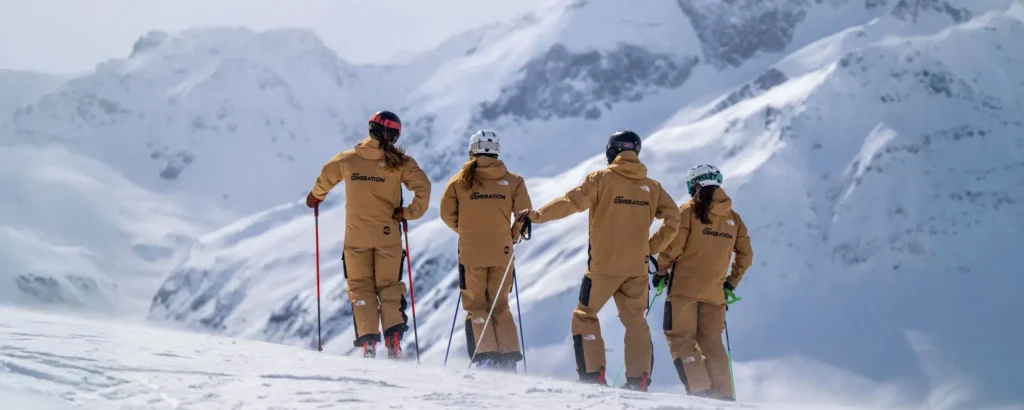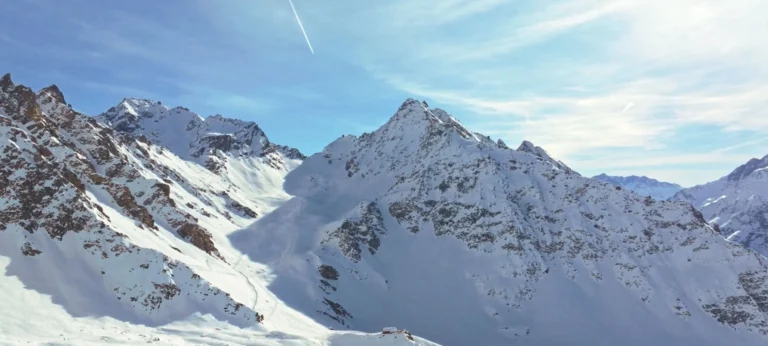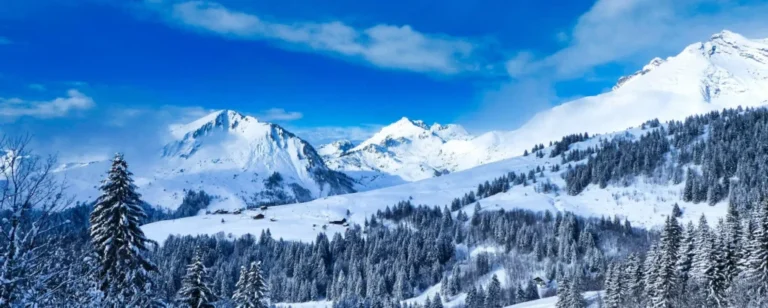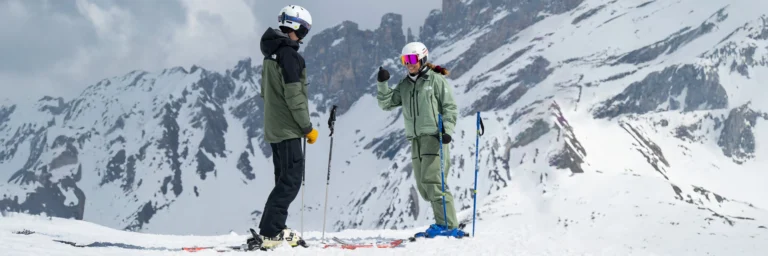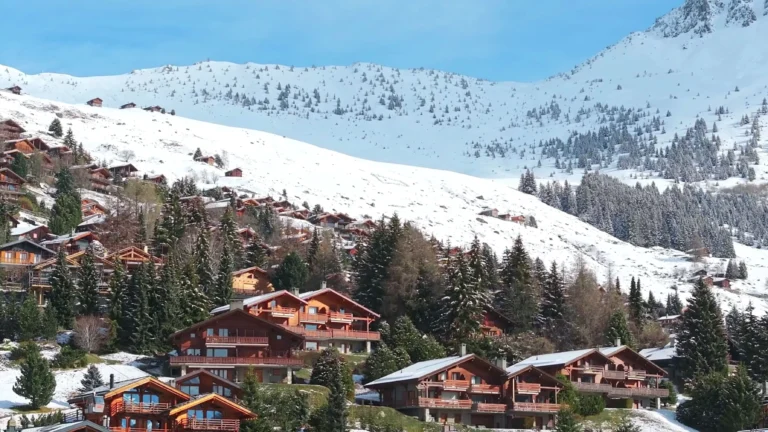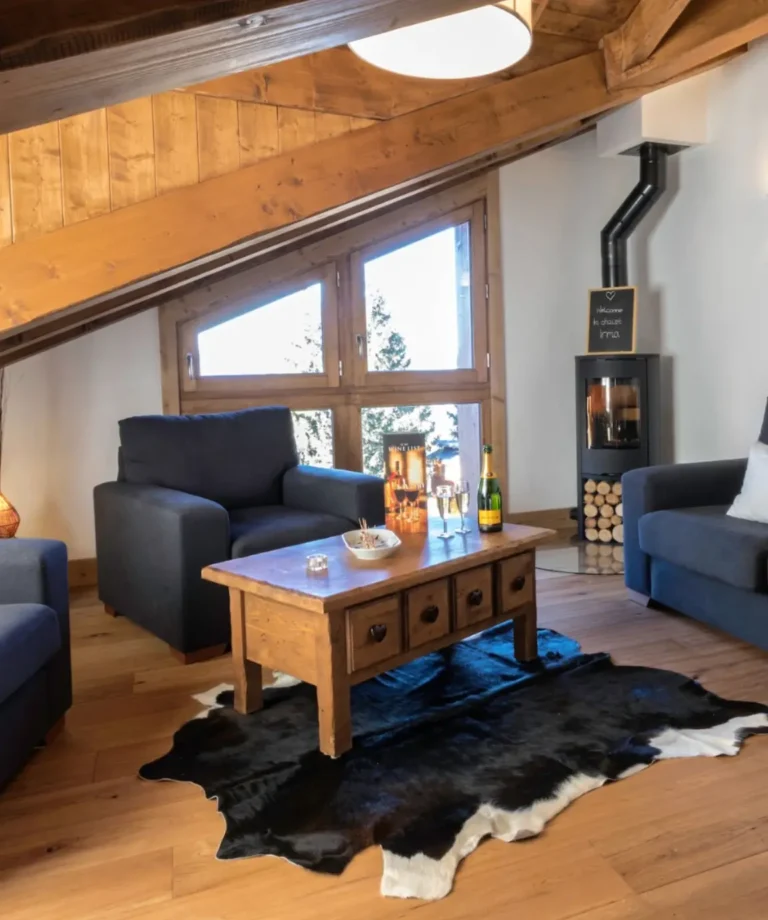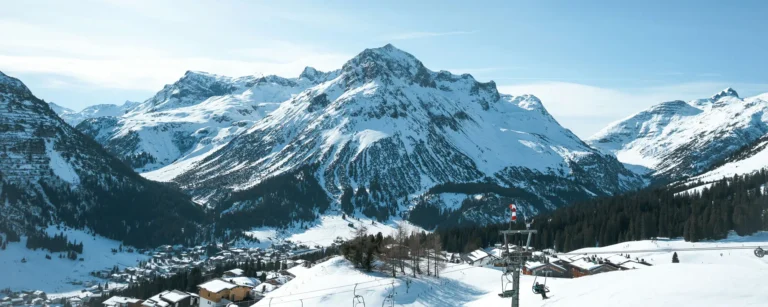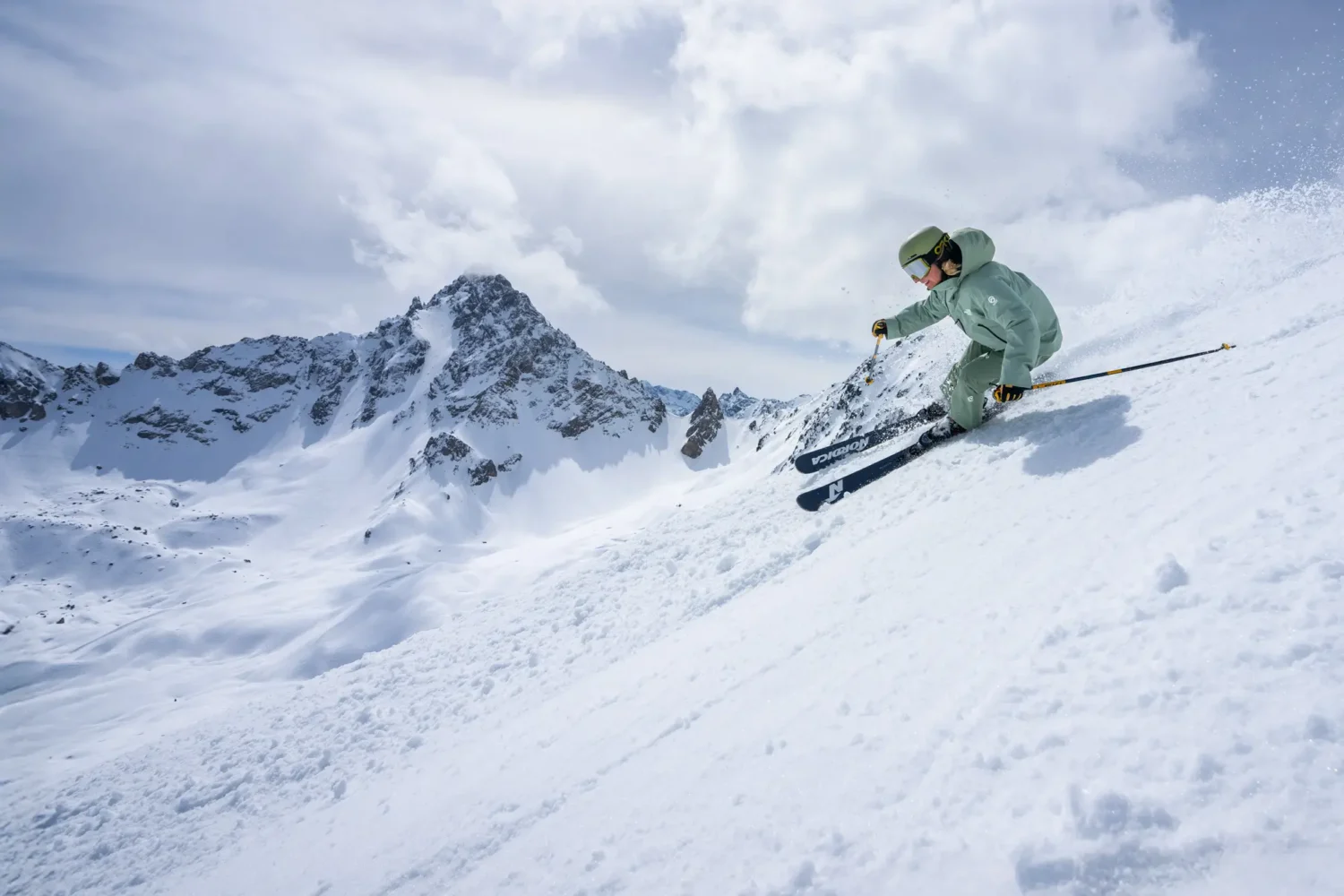(From Someone Who’s Done them)
Having spent a good chunk of change on both DIY seasons and package courses, too. Here’s how much I expected to spend on each.
The cost of doing a ski season
Before committing to a ski instructor course, it’s worth examining the difference between DIY and package instructor courses.
Package courses tend to include everything from accommodation, training, exams, lift passes, and transfers. This is a convenient option, but it offers less flexibility.
Going DIY means organising everything yourself. This takes more effort but can save you a lot of money and gives you way more flexibility. Here’s our breakdown of what to expect with the cost of going the DIY route compared to a package course.
Accommodation
Total: Around £1,000 monthly
Ski Accommodation is expensive for what you get. Most options are designed for groups of 4-8 people. To have the largest choice, you’ll need to find people to share with. Most instructor courses include accommodation.
The cheapest accommodation is further from the resort centre. More affordable accommodation will have more people per bedroom and bathroom. Accommodation on packages and DIY courses require a security deposit of around £500. This is typically returned if the accommodation is in good condition.
10-week DIY cost: £3000 (Running total: £3,000)
10-week package course: £0 (Running total: £10,450)
Travel
Total: £150 to £300 (Return)
Flights: Flying during peak weeks will make your trip much more expensive. Check your course dates before booking. Large checked-in bags and skis also make your ticket much more expensive. Booking in advance will help to reduce the price of your flights.
Transfer: The cost of your transfer will depend on the airport and how far it is from the resort you’re going to. If you’re travelling alone, it will be best to get a shared transfer. where you’ll only have to pay for the seat rather than the whole vehicle. You won’t be charged extra for bringing skis onto your transfer. Transfers are included in most instructor course packages.
10-week DIY cost: £300 (Running total: £3,300)
10-week package course: £200 (Running total: £10,650)
Ski Gear
Skis: £450 – £900
Skis should ideally have a piste focus with a width between 70 and 80mm underfoot. If you’d like help we’ve got a guide on the best ones for BASI Level 2. Second-hand skis can be a great way to save money, but you must know what you look for..
Servicing my skis. During heavy training, I’d waxed my skis every few days and sharpened edges too. At the end of the day I’d run over my edges over with a diamond file to keep them in good condition. Sharp edges are the greatest advantage you can give yourself on hardpack or icy conditions.
A tune at a ski rental shop would cost between €16 and €20. This is with a seasonaire discount. DIY kits cost in the region of £250 (paid back in around 10 weeks).
Boots: £300 – £600
It is definitely worth buying new custom-fit boots. Well-fitting boots massively improve your performance and comfort on the slopes.
The boots I had at the start of the course were too large. This made them difficult to flex as my foot moved inside them. Once I had new custom-fitted boots, I noticed a massive increase in my performance. This meant that the £350 pair of boots I had were useless. The new pair which cost £450. This was a mistake that I hadn’t budgeted for.
Clothing (Inc. Helmet, Goggles and Gloves): £500 – £1,000
Buying second-hand jackets and salopettes can save vast amounts of money. Some second-hand ski gear has only been used for a minimal number of weeks. You can get great condition gear at a fraction of the cost of new gear.
New gear will last past your training and exam period, spreading the cost over the next few years. It’s worth buying a new helmet for safety. Damage from a previous owner will reduce its effectiveness. All of your kit will need to be stored between seasons.
10-week DIY cost: £1,500 (Running total: £4,800)
10-week package course: £1,500 (Running total: £11,950)
Food
Total: Around £50 – £100 per week
When self-catering, I spent £50 – £75 per week on food. I would rarely have lunch at a mountain restaurant due to its high price. Instead, I would spend up to £4/5 for a hot sandwich and a drink from the SPAR just outside the town centre. If I wanted to save money, I would make a packed lunch or eat lunch when I got home. My weekly ‘big shop’ was £50 at M-Preis. To keep my spending down, we would travel down to the Lidl about 25 minutes away for cheap pasta. I would eat this or fish fingers, onions, potatoes and beef mince, to manage my budget.
10-week DIY cost: £1000 (Running total: £5,800)
10-week package course: £250 (Running total: £12,200)
Lift Pass
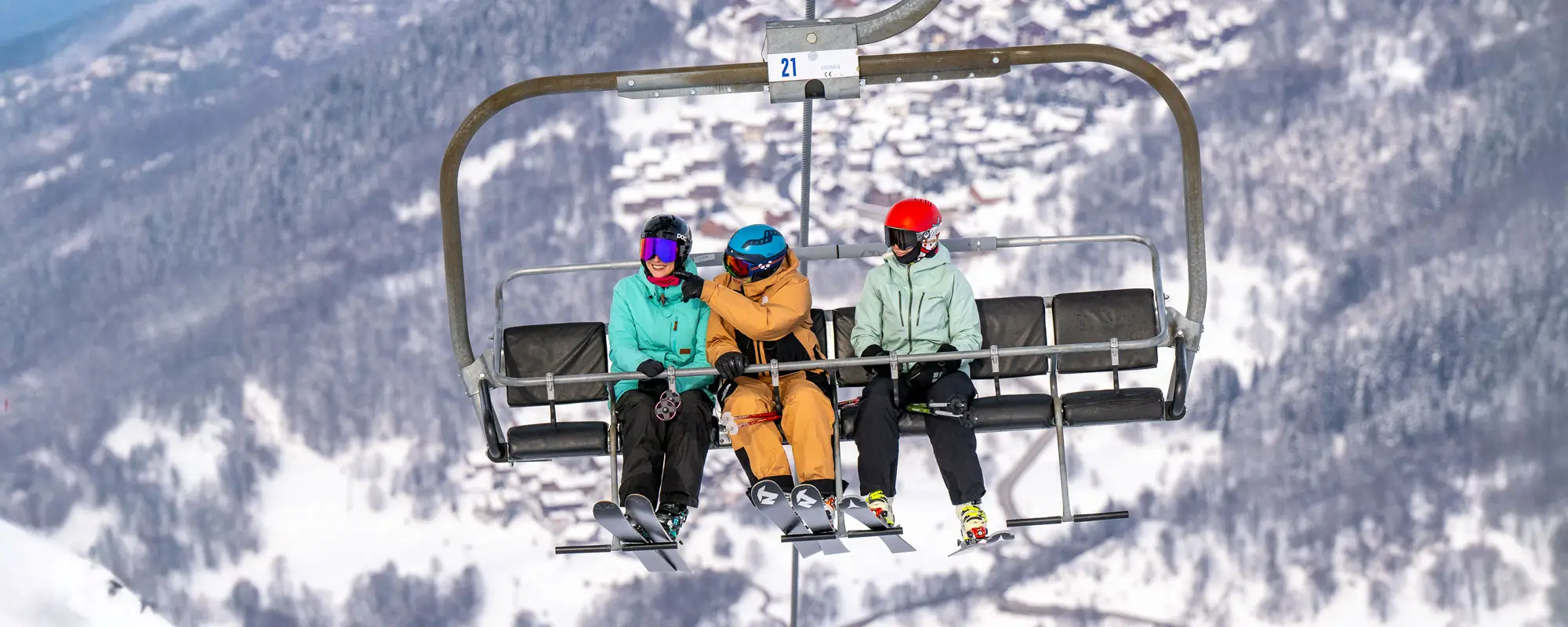
Season pass prices: Meribel £1,150 / Tignes £975 / Verbier £1,155
Having the resort season pass is worth it if you’re looking at training for an extended period.
It is worth looking at what point it is cheaper to buy a daily pass over a season pass, even on a shorter trip. Our Tignes Fast Track course is three weeks long, and it’s still cheaper to buy a season pass. For a season pass, it’s £975 vs £1,007 if you bought the days without a season pass. There’s also the benefit that if you return to the resort later that season, you’ll already have a lift pass to use. Buying them in advance may get early-bird discounts on season passes.
10-week DIY cost: £1,150 (Running total: £6,950)
10-week package course: £0 (Running total: £12,200)
Exams and Reassessments
Total: £1,228
BASI exams work based on continual assessment. For the price of the exam, the trainer will give you a full day of training to bring you up to the standard by the end of the exam.
| BASI Level 1 | £499 | 4 days |
| BASI Level 2 | £729 | 8 days |
We had a 100% pass rate on our BASI Level 2. If you were unsuccessful, a reassessment would cost £499. These reassessments aren’t always in the same resort where you did your initial exam. More costs come from travelling to a new resort, renting accommodation and buying a new lift pass. It’s a good idea to get training between your failed assessment and your reassessment. You’ll want to be confident that you’re at a level where you’ve got the best chance of success.
10-week DIY cost: £1,228 (Running total: £8,178)
10-week package course: £0 (Running total: £12,200)
Training
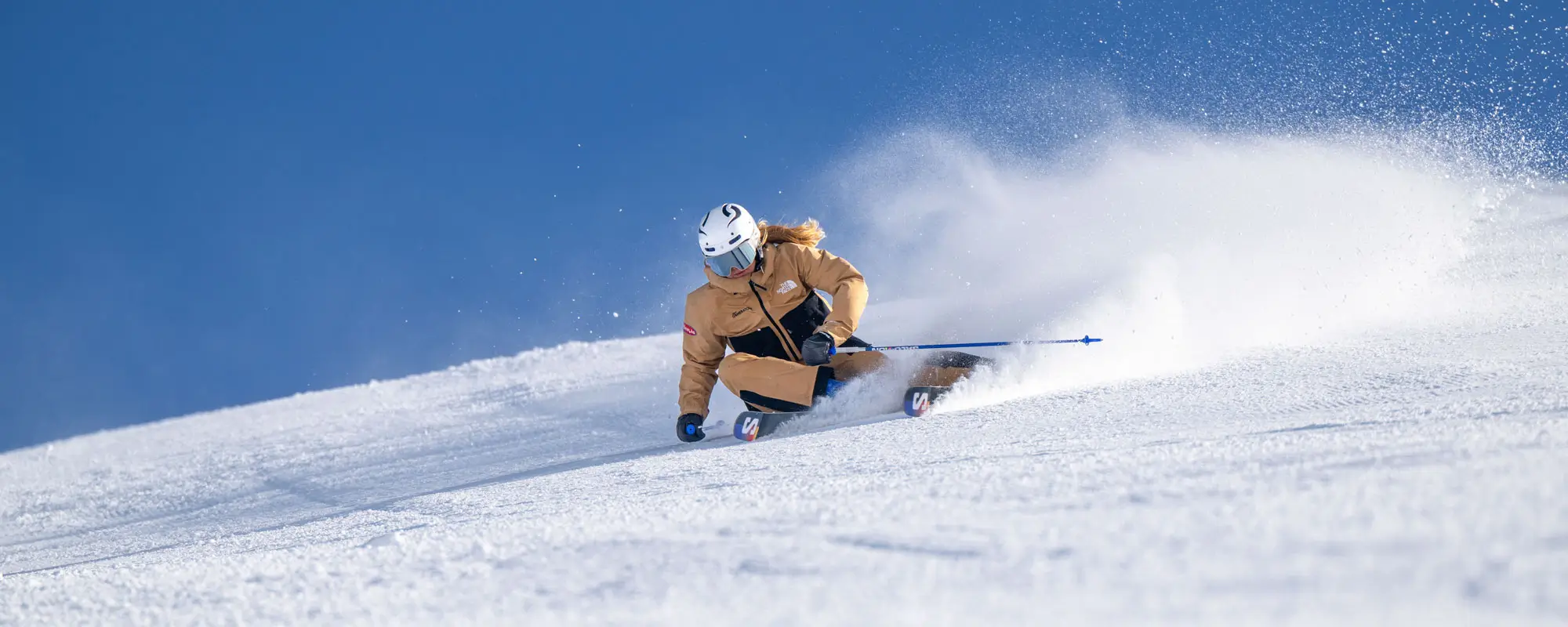
Total: Around €600 per week (roughly 20 hours per week)
When doing a DIY season, you’ll be responsible for arranging your own training sessions. At BASI Level 1 and 2, there are not as many options for training only options. Our Tignes BASI Level 2 Fast Track has 50 hours of training. The Meribel 10-week course has over 130 hours. The Verbier course has 180 hours. Providers offering training only are priced in the region of €600 per week (roughly 20 hours per week).
10-week (7 Weeks of training in GBP) DIY cost: £3,600 (Running total: £11,778)
10-week package course: £0 (Running total: £12,200)
First Aid Course
Total: £130, dependent on provider
The first aid course is another compulsory part of your BASI 1 and 2. This costs around £160 and is at least 12 hours long, usually spread over 2 days. Ensure that it takes place close to where you’re based to reduce the costs of travel ahead of your BASI exams.
10-week DIY cost: £130 (Running total: £12,078)
10-week package course: £0 (Running total: £12,200)
Insurance
Total: £200 to £300
| Injury | Average Associated Cost (Aviva) |
| Fractured Ribs | £3,100 |
| Broken Wrist | £4,000 |
| Dislocation | £4,000 |
| Fractured Clavicle | £4,000 |
| Broken Leg | £7,500 |
Travel insurance is essential. If you get injured on the ski slopes, getting assistance to help you get down can be costly. Treating injuries abroad can also be costly. Being repatriated to the UK will cost thousands.
Some policies excluded off-piste or ski racing. Upgrading cost £48 but would’ve saved me £1000s if I had to be rescued.
10-week DIY cost: £200 (Running total: £12,278)
10-week package course: £200 (Running total: £12,400)
Non-Financial Challenges
Arranging Shadowing
You must have 35 hours of ski school experience before your BASI Level 2. You’ll have to coordinate this with a ski school before your exam.
My 35 hours were arranged as part of my inclusive BASI 1 and 2 course in Courchevel. This was signed off by New Generation. I then submitted this to BASI. Make sure that your training provider can assist you in finding shadowing opportunities.
Navigating Admin
Help provided during a package course can be invaluable. A ski school’s expertise helps you navigate the complexity of Visas. They also have a wealth of knowledge on Ski instructor work permits. Permits and Visas typically take 10-12 weeks to complete. Ensure that you don’t leave it last minute.
If you’re doing a DIY season, you’ll also have to manage and arrange housing with others. Shadowing and training sessions. BASI Exams and first aid modules. Coordinating all this to happen at the right time in the correct resort is difficult.
Approximate Costs
10-week DIY cost: £12,278
10-week package course running total: £12,400
What I’d do differently next time
1) Be open to shared accommodation. Every season, I shared accommodation with others. This was far better than expected, as everyone was very like-minded. It makes it affordable and a great way to make friends.
2) Lengthen the season as much as possible if commitments, budgets and visas allow. I used the start of my seasons (October/November) to do Giant Slalom training or BASI Level 3 Modules. I would use the end of my seasons (April/May) to work or do more BASI Level 3 Modules.
3) Balance the amount of time going out. Après ski is great fun. Even so, I don’t look back wishing I had gone out more. It’s a case of quality over quantity. Après is expensive, and it can get in the way of training. Looking back on my time in the Alps. Passing my exams and great days on the slopes are what I remember most fondly. Whilst I did have amazing times on night outs in Val d’Isere or St Anton. If I could have another day there, I would spend it on the slopes rather than in the bars.
4) Give yourself enough time in the mornings. When you start working as a ski instructor, if you’re on time, you’re late. Ski fatigue makes it hard to power through late nights and get up early.
Don’t be tempted to hit snooze and get an extra five minutes in the morning. You’ll have a much more stress-free time by getting up early. Running for a bus in ski boots isn’t fun. Being late would be even less fun. No ski school will hire instructors with a reputation for being late. Best solution – get up early.
5) Don’t be afraid to take a break. I remember skiing for weeks straight, including on my days off when I had neither work nor training. Towards the end of it, I was skiing like shit and getting ill. The training I was doing was pointless as it was nowhere near my best. Once started taking a day off to chill or do something else, I skied much better.
